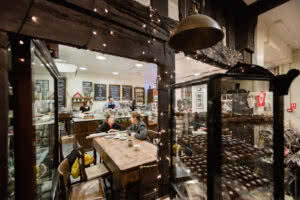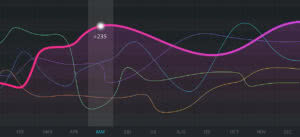Think a great festival website needs to be jaw-droppingly beautiful to capture people’s interest? Think again. You’ve only got a matter of seconds to attract a visitor’s attention before they leave – and the best way to do that is with clear communication. (This is especially important for post-lockdown festivals because you’ll want to reassure your attendees that you’re doing everything you can to make it COVID-secure.)
Whether this is your first foray into festival organisation or you’re running a recognised event, a well-designed website can have a big impact. Right now, your site could make all the difference between encouraging attendees to return to your festival, and the wider festival scene, and driving them away.
For you, that means you need a catchy headline and description, as well as an engaging festival website design. Here’s the basic anatomy of a successful festival website, so you and your team can build one that’s optimised for sales.
Make the most of your event’s images
The human eye processes images in 13 milliseconds – much faster than it can read. That’s why it’s critical to use engaging visuals across promotional assets. If you have them, it’s a good idea to use photos of attendees enjoying your festival to illustrate the fantastic time they can expect to have at your event. WOMAD, an international arts festival, uses a video on its homepage to demonstrate how vibrant and diverse its event is.
Here are four simple ways to improve your photography game:
- Use images of satisfied attendees in prominent places on your website
- Highlight images of the venue and your performers further down your web pages
- Invest in a professional event photographer to get high-quality images
- If a pro is too costly, you can use stock photography (just make sure you can use it for free)
Use attention-grabbing headlines and descriptions
The secret to crafting headlines and sentences that pique visitors’ interest is understanding your event’s value proposition and being concise with your copy.
Here are five easy ways to bring your festival website copy to the next level:
- Use bullet points when possible to make it easier for people to skim through
- Limit paragraphs to three or four sentences
- Consider using helpful and relevant links in your copy, like FAQs
- Use benefits, not features, in your headlines and descriptions
- Always use the active voice
Make the date, time, and location of your festival prominent
Once your event website has grabbed someone’s attention, make sure they can scan the page and find out when and where it’s taking place as well as all of your festival ticket prices. The higher up this information is on your homepage, the better. For example, Farmfest‘s key information is the first thing visitors see when they enter the website.
Follow these tips for prioritising the date and time on your landing page:
- In addition to including the date and time in the header of each page, make sure to repeat these important details in the footer
- Embed a Google map into your “About” page, which also improves SEO
Create a “call to action” that drives ticket sales
Your festival website is a treasure map, and your call to action (CTA) is the giant red “X” that says “Over here!” After an interested event-goer has decided to attend your event, they shouldn’t have to figure out where to go to buy a ticket.
Follow these best practices to help visitors to your website buy tickets:
- Put a CTA button up top on the homepage of your website
- Use active language, like “Get Tickets”
- Make it pop by using a contrasting colour for the button
Add your festival lineup or schedule
People want to know who’s performing and when. Make sure you don’t present that information as a boring list, though. Your website visitors will expect an interactive and easy-to-read lineup. In the current climate, it’s possible that your festival lineup might change leading up to the event, so it’s worth mentioning this on your website to avoid any disappointment.
Here are three easy ways to take your schedule from boring to exciting:
- Do some research on how your competitors present that information and pick what you like (pop-ups that overlay on the webpage are a popular approach right now)
- Gather talent bios and photos as soon as you confirm them, so that you have the content ready to go
- Make each description punchy and engaging, whether it’s the artists performing or activities festival-goers will enjoy
List event sponsors
From big-name festivals to smaller, local events, festival sponsors can add credibility and extra budget. To give sponsors even more value, you can offer them space on your site.
Here’s how to incorporate sponsors on your website:
- Don’t just feature sponsor logos on your website’s home page. Instead, tell visitors why sponsors are important partners and how they’ll enhance the experience.
- If you have a blog on your festival website, ask sponsors to write a guest post that encourages attendees to drop by and meet them in person.
Get your festival website out there
Your website should be the ultimate salesperson for your festival, so it’s worth doing your research and checking out competitors for event website ideas. Then, once your festival website is up and running, it’s time to market your event.





